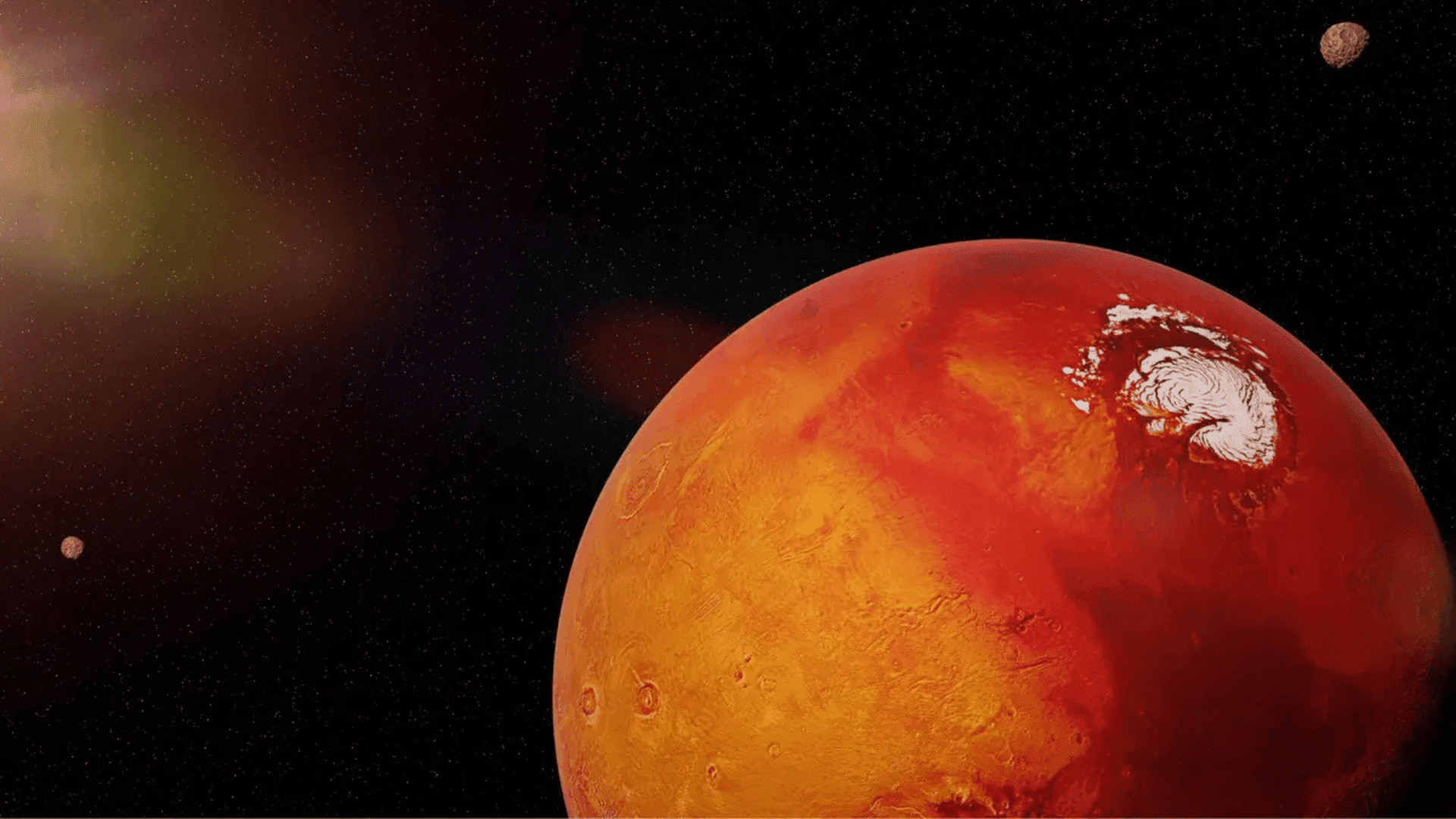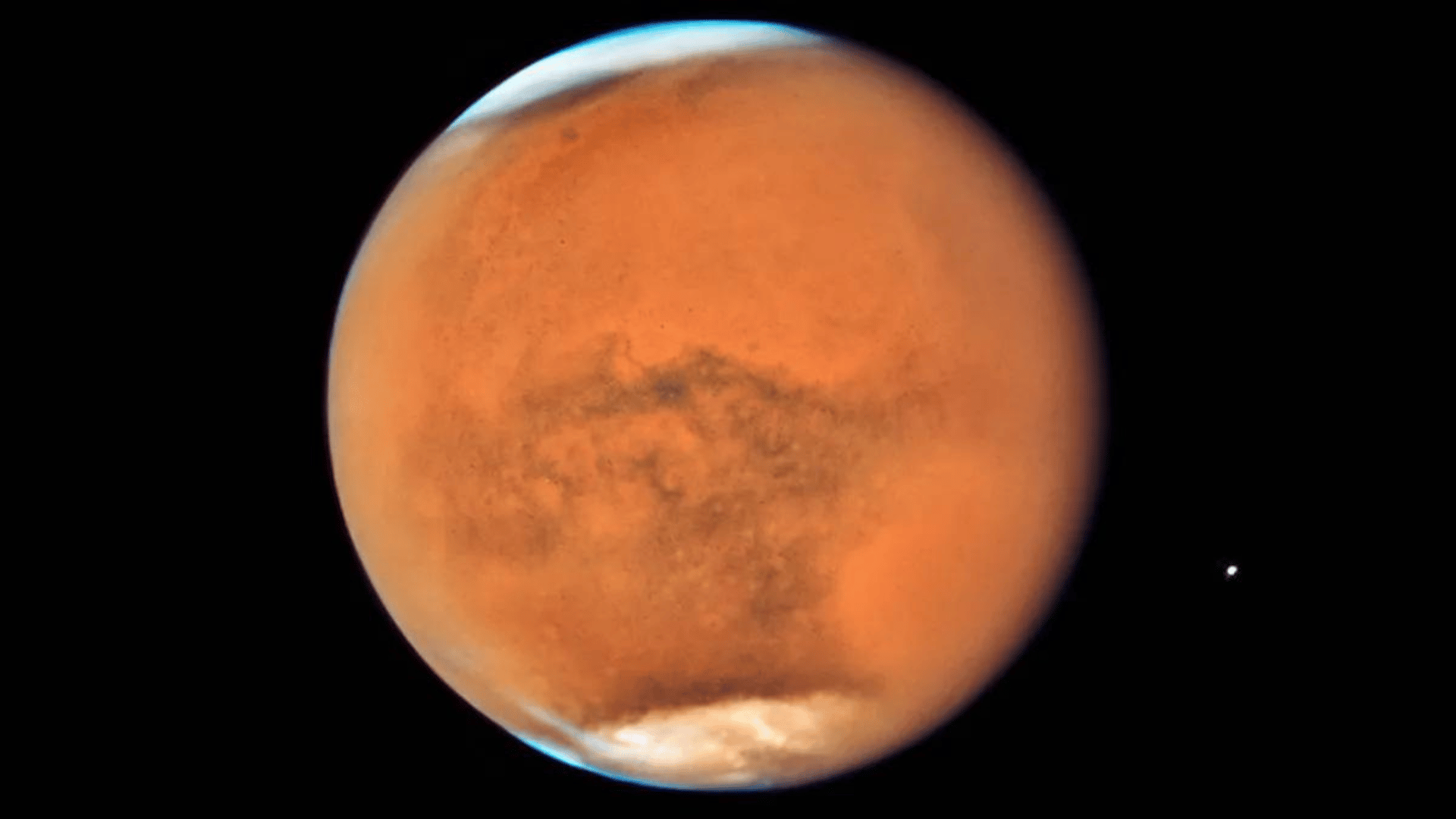A new NASA study proposes that microbes could have found a potential life-sustaining home beneath frozen water on Mars.

Using computer modeling, the study’s authors have demonstrated that the amount of sunlight capable of shining through water ice would be enough for photosynthesis to occur in shallow pools of meltwater below the surface of that ice. Pools of water similar to this occurring on Earth have hosted life, such as algae, fungi, and microscopic cyanobacteria.
There are two kinds of ice on the red planet: frozen water and frozen carbon dioxide. This study specifically examined water ice, of which there are large quantities that formed from snow mixed with dust that fell during a series of Martian ice ages over the past million years.
Though dust particles would likely obscure light in the deeper layers of the ice, dark dust absorbs more sunlight than the surrounding ice, which may cause the ice to warm and melt up to a few feet beneath the surface.
Scientists are divided on this theory due to the planet’s thin, dry atmosphere, which some researchers believe would cause water ice to sublimate or turn directly into gas. These atmospheric effects, however, may not apply below the water’s surface.
Dust within ice can create cryoconite holes or small cavities that form when particles of windblown dust land there, absorb sunlight, and melt farther into the ice each summer. Eventually, as these dust particles travel farther from the Sun’s rays, they stop sinking but still generate enough warmth to create a pocket of meltwater around them, which can provide an ecosystem for simple lifeforms.
“This is a common phenomenon on Earth,” said co-author Phil Christensen of Arizona State University in Tempe, referring to ice melting from within. “Dense snow and ice can melt from the inside out, letting in sunlight that warms it like a greenhouse, rather than melting from the top down.”
The new research suggests that photosynthesis could occur as deep as 9 feet below the surface while the upper layers protect the water pools from evaporation and radiation. Researchers have begun mapping possible locations of these subsurface pools for future missions, which are likely located in Mars’ tropics between 30 degrees and 60 degrees latitude.






